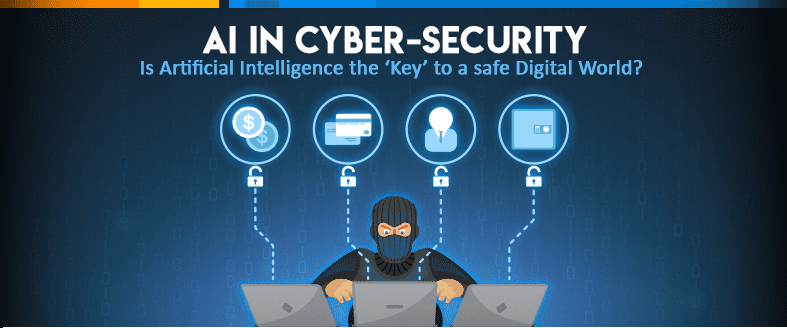Last updated on July 5th, 2020 at 06:15 pm
The digital world has been shaken up many a time by cyber-attacks which only continue to get sophisticated and more complex. True to the fact that this era is being referred to as the ‘digital dark age’, data fraud and cyber attacks are two of the top 5 global risks in the world today, not far behind natural disasters and abject weather situations
However, AI and ML are being leveraged to take the battle against cyber attacks up a notch. The future of artificial intelligence will see cybersecurity being taken off the hands of human resources and automated to achieve more efficient results in real-time.
How AI and Machine Learning Affects Cybersecurity
Detection of Anomalies
Before prevention comes detection– and that was one of the many failings of a human-based security force that couldn’t keep up with increasingly complex digital threats. Deep learning and access to databases spanning decades have made AI and ML capable of detecting anomalies in existing systems and tracing sources, whether internal or external.
Pre-emption of Strikes
AI and ML are crucial in the continuous battle against cyberattacks. That said, they’re also instruments used by hackers to conduct strikes. In a case of fighting fire with fire, AI and ML can be leveraged to pre-empt such strikes to identify vulnerabilities and identify threats in services from as basic as emails to as confidential as financial transactions.
Prediction of Threats
As any Machine Learning course would teach, pattern prediction is a perk of AI and ML that can be used in achieving cybersecurity targets and maintaining defenses against breaches. Emerging technologies such as these can successfully predict the likelihood and type of future threats as well as identifying the source to take preventative measures. The same logic can be implemented internally, to analyze internal systems and close up loopholes and weak links.
Improvement of Biometric Authentication
Gone are the days when passwords and swipe patterns were the most innovative authentication technology could get. Biometric authentication is the new norm– think face ID, fingerprint technology– but inaccuracies and failings were always a concern. Today, developers are leveraging AI and machine learning to rid biometric authentication of its imperfections to make it more stable, reliable and more difficult to hack. This is crucial because biometric authentication affects so much more than cellphones and email addresses– it’s used for ID verification, financial authentication and more. Therefore, the stakes are much higher.
Management of Vulnerabilities
In the days when security was largely relegated to antivirus software and human resources, vulnerabilities would be manipulated and turned into a threat or an outright attack before measures were taken. In contrast, AI and ML allow firms to identify and manage their vulnerabilities well in advance so that the approach is preventative rather than scrambling for a cure. AI and ML use a plethora of combinations and tactics to identify these vulnerabilities, such as:
- Dark web leads
- Hacker discussions or threats
- Threat patterns
- Frequently targeted systems or divisions
- Risks and losses at hand
By effectively leveraging emerging technologies, firms can meet cyber-threats head-on, even strike pre-emptively, instead of dealing with thousands of dollars’ worth of losses and bills in the cleanup.

